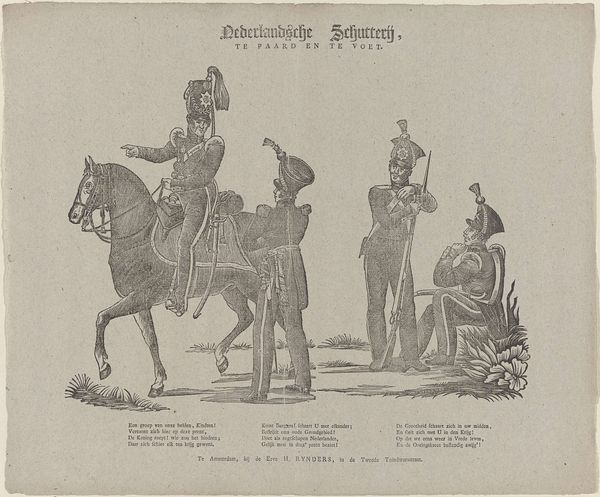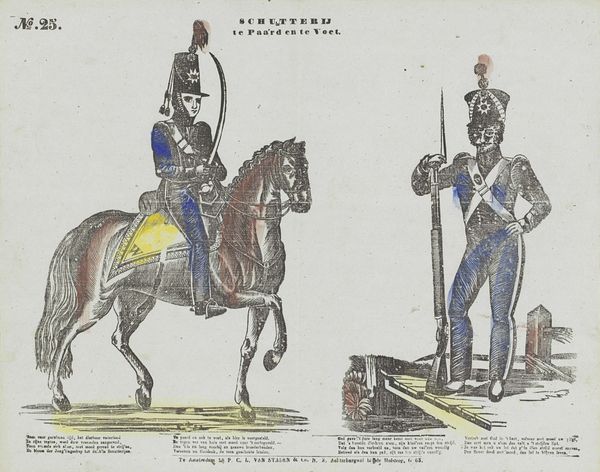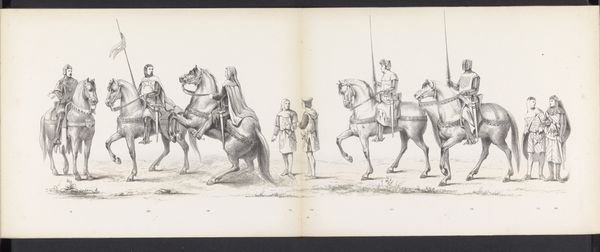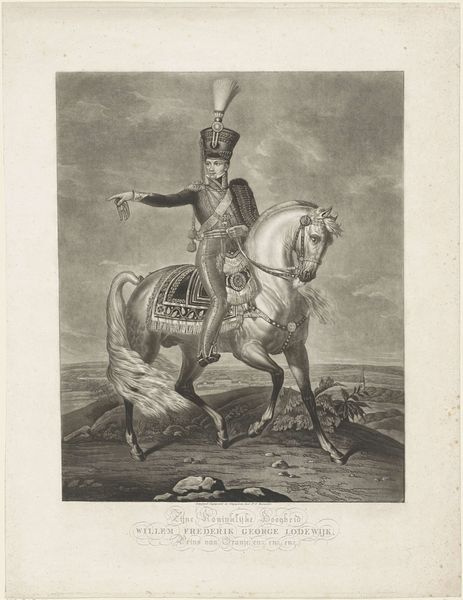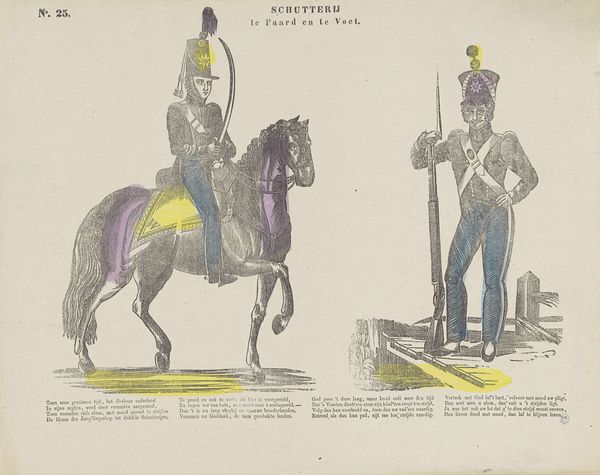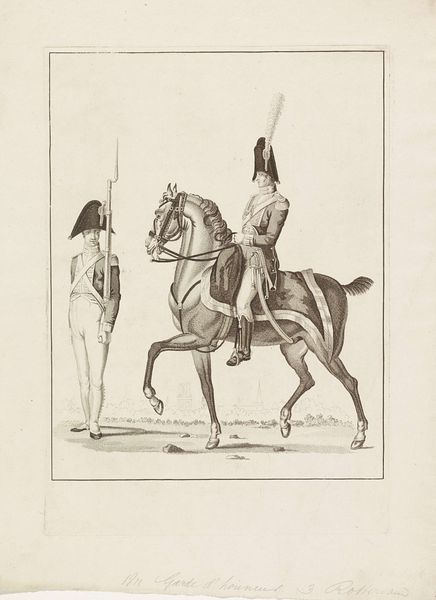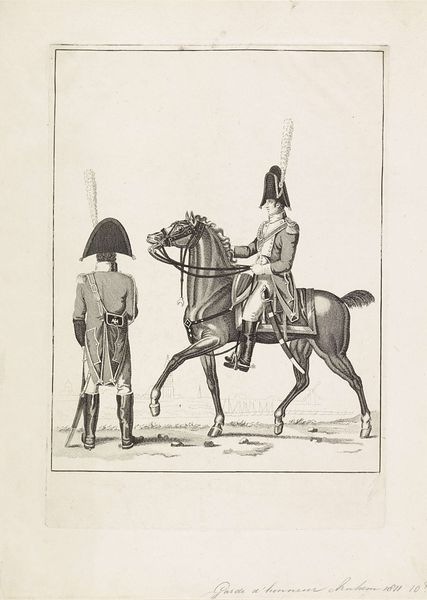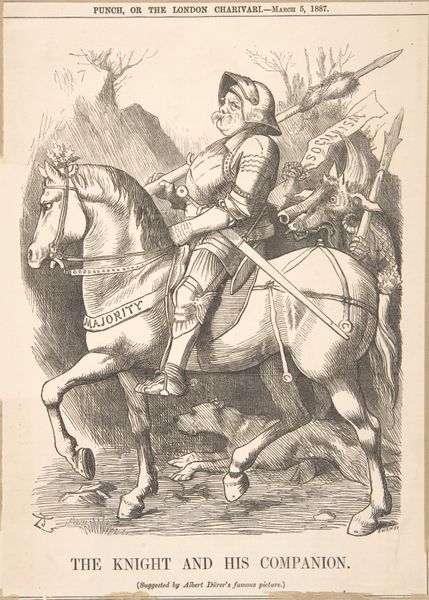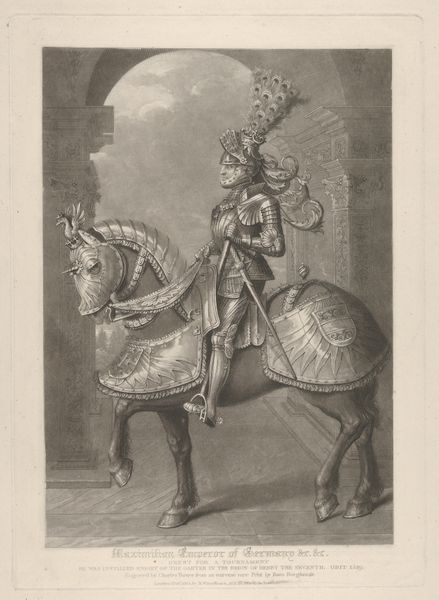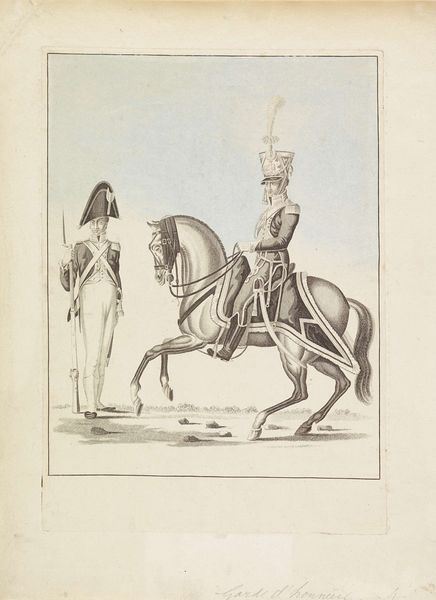
drawing, print, engraving
#
portrait
#
drawing
#
light pencil work
#
quirky sketch
#
dutch-golden-age
# print
#
old engraving style
#
figuration
#
personal sketchbook
#
sketchwork
#
ink drawing experimentation
#
pen-ink sketch
#
line
#
sketchbook drawing
#
genre-painting
#
storyboard and sketchbook work
#
sketchbook art
#
engraving
Dimensions: height 325 mm, width 378 mm
Copyright: Rijks Museum: Open Domain
Editor: This is "Schutterij / te paard en te voet" by Jacob Coldewijn, made sometime between 1827 and 1894. It's currently housed at the Rijksmuseum. The artwork is some sort of print, an engraving perhaps, of two guards, one on horseback and another on foot. I'm struck by the precision of the lines and the detail captured in what looks like a mass-produced image. What strikes you most about this piece? Curator: I am drawn to the process behind its creation. This engraving, likely intended for wide distribution, reveals a tension between artistic skill and the demands of a growing print market. Notice how the meticulous details, especially in the uniforms, would necessitate a division of labour: skilled engravers working alongside, and possibly directed by, publishers and distributors focused on volume. Consider the societal implications. Who had access to this imagery? What sort of message was this imagery supposed to deliver? Editor: I hadn't thought about it that way. It does seem very detailed for something meant to be widely distributed. Do you think this was supposed to be an affordable print? Curator: Likely, yes. Its value, however, lies not just in its affordability, but in its function. Cheap prints democratized imagery and ideas. By reproducing and circulating images of the militia, it perhaps aided in constructing and propagating ideas about civic duty and military readiness across social strata. How would this have shaped the viewer's perception of the military and the state? Editor: I guess seeing this kind of image frequently, even inexpensively, would have normalised the presence and authority of the military. So, the material context—its accessibility and means of production—shaped its meaning? Curator: Precisely. The production process and the print’s accessibility informed its role in shaping public consciousness. Considering art as a material product within a broader socio-economic framework really enriches our understanding.
Comments
No comments
Be the first to comment and join the conversation on the ultimate creative platform.


